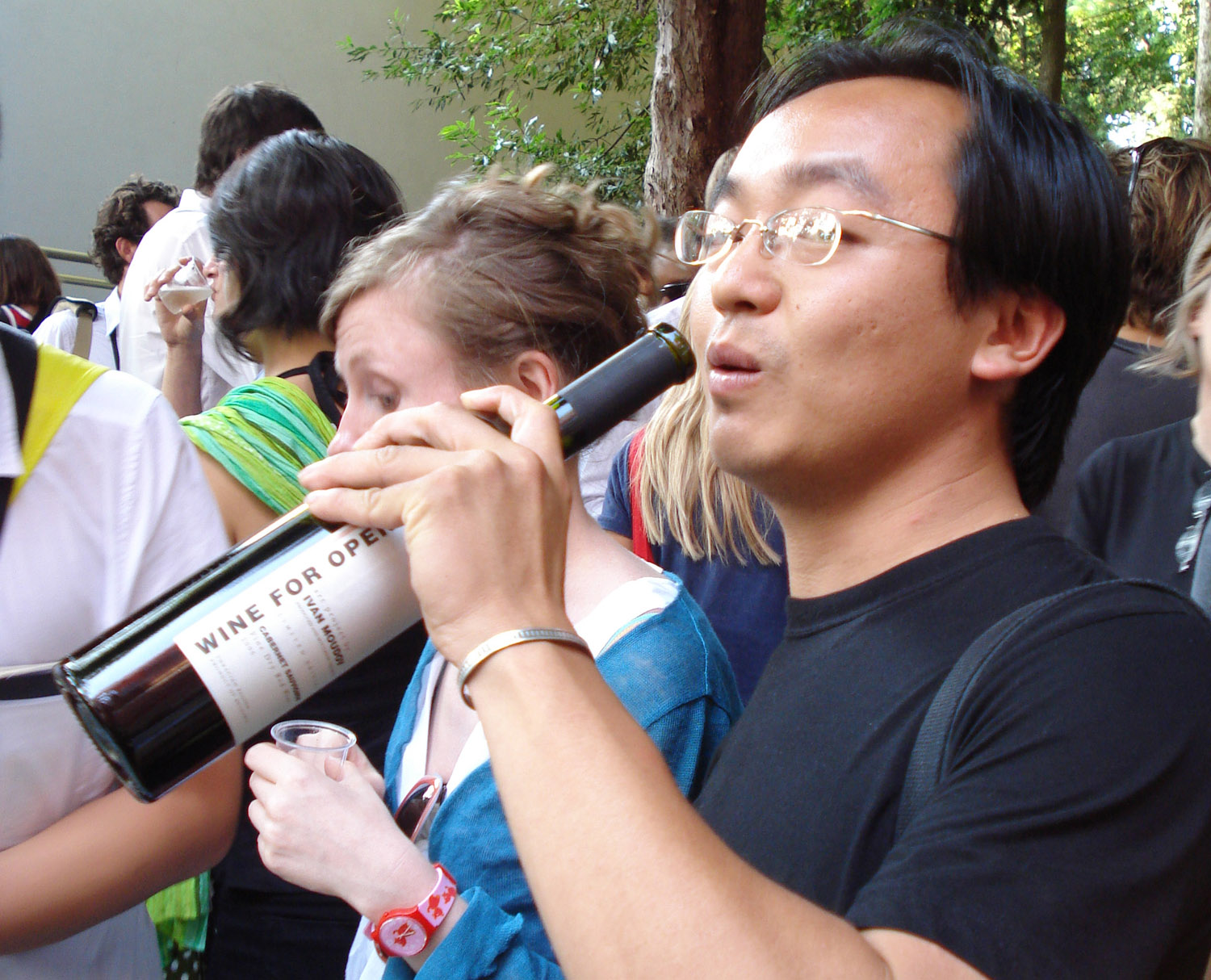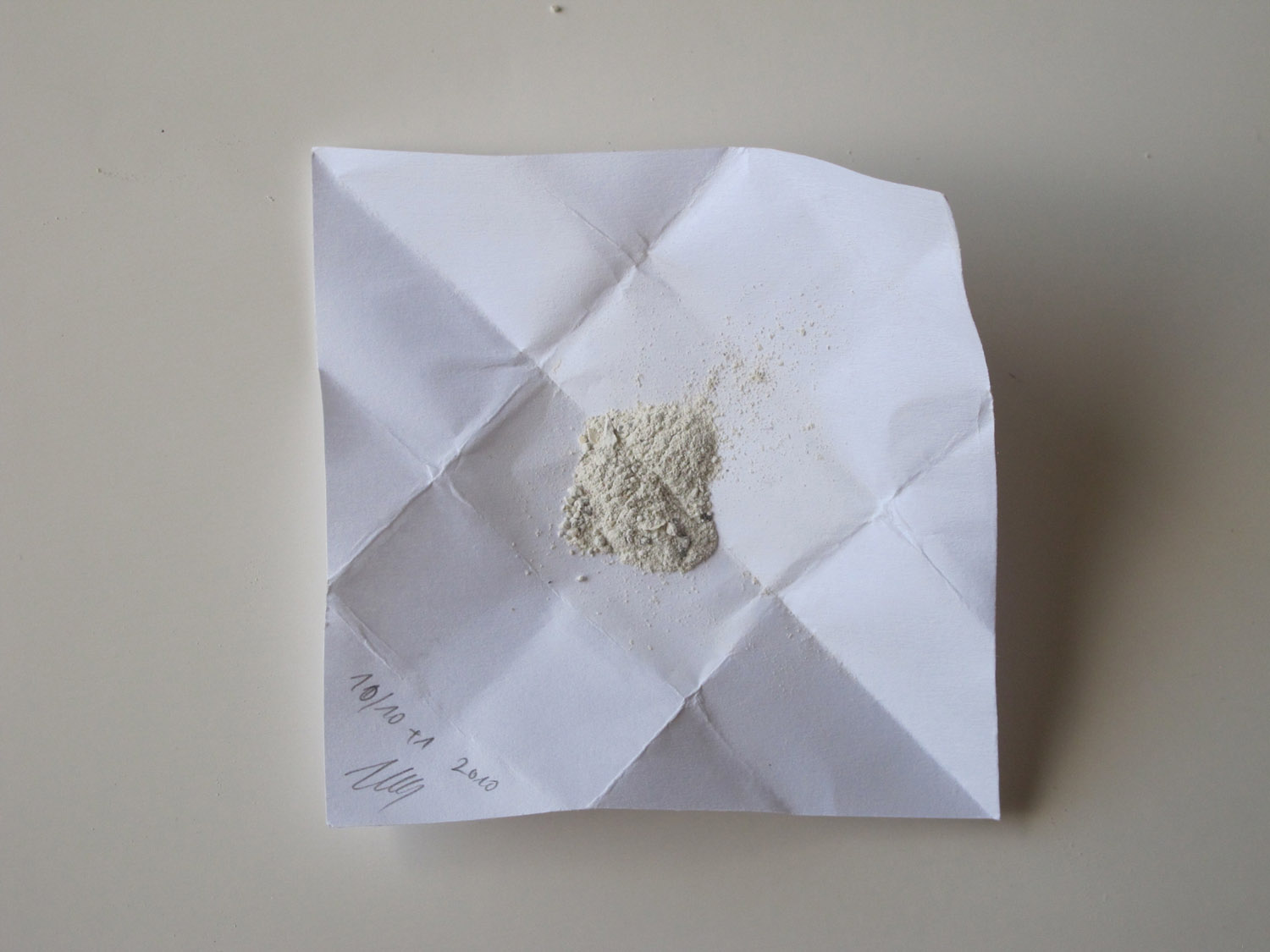The Artist’s Innocent Revenge
In 2000 Ivan Moudov created the video “One Hour Priority” – a documentary of an author’s performance where in the course of one hour the artist moved in a notorious junction in Sofia and took advantage of the traffic signs. The camera that was mounted inside his car recorded part of the driver and the changing pictures that could be seen from the driver’s seat. Several aspects that became typical of Ivan Moudov’s art became evident even at this early stage. On the one hand, it is the provocative idea which is both material (the pulsating cityscape) and philosophical (the eternal pursuit of priority). On the other hand it is the clear demonstration of the artist’s ability to take advantage of a situation (the traffic signs which give priority to a member in the circular traffic) and to manipulate it at the same time (the traffic jam that he caused). The rhythm between the general and the particular, between reality and fiction, between play and seriousness is the guiding element in practically all the works of Ivan Moudov. The artist knows how to control the situation and controls it with ease at that.
In his video “Traffic Control” of 2002 Ivan Moudov, with a baton in his hand and a whistle in his mouth and wearing a Bulgarian policeman uniform, stood at a busy traffic intersection in Graz, Austria and stopped and let the vehicles go for a quarter of an hour. In a typical city situation he played a somewhat different role: he was not one of the crowd, he was one of the rule enforcers. The change of uniforms (or of states) suggests the “rule of insignia” and is a joking effort by a small country (of which the Bulgarian policeman’s uniform is the symbol) and which always has to catch up with the others to exercise control on a former empire. Again the artist demonstrates his ability to direct city scenes by means of common everyday action. His unconventional perspective gives new meaning to the clichés of life, turns them upside down and replaces labels with other labels.
These two performances were continued in Weimar, Germany in 2005 in “14:13 Minutes Priority”, when a compact group of seven cars paralyzed the traffic as it stood in the way of the vehicles coming from the side streets and thus lines were formed in all directions and over a distance of many kilometers. In addition to the spatial compositions with unsuspecting players Ivan Moudov manipulated the time. In the rush hour when each lost second causes a dramatic feeling of loss the artist created a continual series that seems to suggest that the particular second is irrelevant in the mainstream of global time. The picture of hundreds of vehicles that the artist’s willpower “arrested” is a composition with global implications. He violated the rules by using the very same rules that were formulated to prevent chaos.
The idea of possible and soft manipulation of large communities is the core of his installation “Wind of Changes” that he created for the Moscow Biennial in 2005. A wind turbine to generate electricity is mounted on the roof of the museum. The purpose is to supply electricity needed to operate the four cameras to watch visitors and the four monitors. The involvement of the public in the projects is what one of the artist’s latest works, “New Hope”, 2006 counts on. The visitors in space become the material for the artist’s experiment. In the seemingly normal lift they experience the whole range of feelings locked between “fear” and “horror”. The lift does not go up as expected; all of a sudden it is only the floor that goes up and as the two planes are about to meet, it seems all the nightmares of sci-fi films become a reality. The artist’s latest project “Siesta” again draws on the reactions of random people. They were invited to take a nap in his studio in Paris and the artist took snapshots of them “before” and “after”.
In 2002 Ivan Moudov started his project “Fragments” which provoked a lot of dispute and discussion. His idea was very simple: he started his own museum of modern art with exhibits that were fragments from the works of famous artists. He had stolen these pieces and carefully put them into boxes that resemble Duchamp’s famous valise. By and by the boxes acquired a different meaning and obtained a more serious raison d'être within the framework of the MUSIZ action of 2005. It was part of the Visual Seminar Project of the Institute of Contemporary Art in Sofia. Ivan Moudov harnessed his talent again to make the public his ally. He announced that a Museum of Contemporary Art would be opened in Sofia (the museum is non-existent but desired by many people) and launched a mass PR campaign with posters stuck and billboards mounted in the city center and with invitations that were sent accordingly. A specific building was chosen as a venue of the event, the Poduene Station. The provocation was successful; hundreds of people went there and most of them believed what happened were real. The action became one of the most discussed events in Bulgarian contemporary art history. Of course, one of the objectives of the exercise was achieved as a debate was provoked about the non-existing museum. Apart from that, Ivan Moudov’s ability to dominate, control and direct without any visible effort was really admired. Again as if by way of joke the artist made a large number of people slaves of his whims and even more: he raised serious questions in a very spectacular way. In the context of that action the “Fragments” are now perceived as part of the dreamed of and still waited for museum of contemporary art. Thus Ivan Moudov’s portable museum became more than an object of personal consumption. To a certain extent it is destined to be a monument of the negligence of the institutions in his country. The artist continued his reflections in this vein with the “Guide” Project where the absent work of art is retrieved in the minds of the public with the aid of the conventional museum explanation using the audio-guide.
Ivan Moudov likes to play with the rules and stereotypes. This is his way to take revenge on society for its deficiencies. However, there is yet another aspect which is omnipresent in his art and which should not be forgotten: humor and irony. Even when he draws attention to such serious matters Ivan Moudov reserves the privilege to be an outside observer who looks in a somewhat mocking way at the drama caused by the non-existing museum and the museum of contemporary art in general. This is what makes his projects fascinating and original.
 text
text

